Save Time

Judging from this use of LMS example you can greatly decrease costs, by redirecting the efforts of your workers. Hence, your team will have more free time for their daily lives and work.
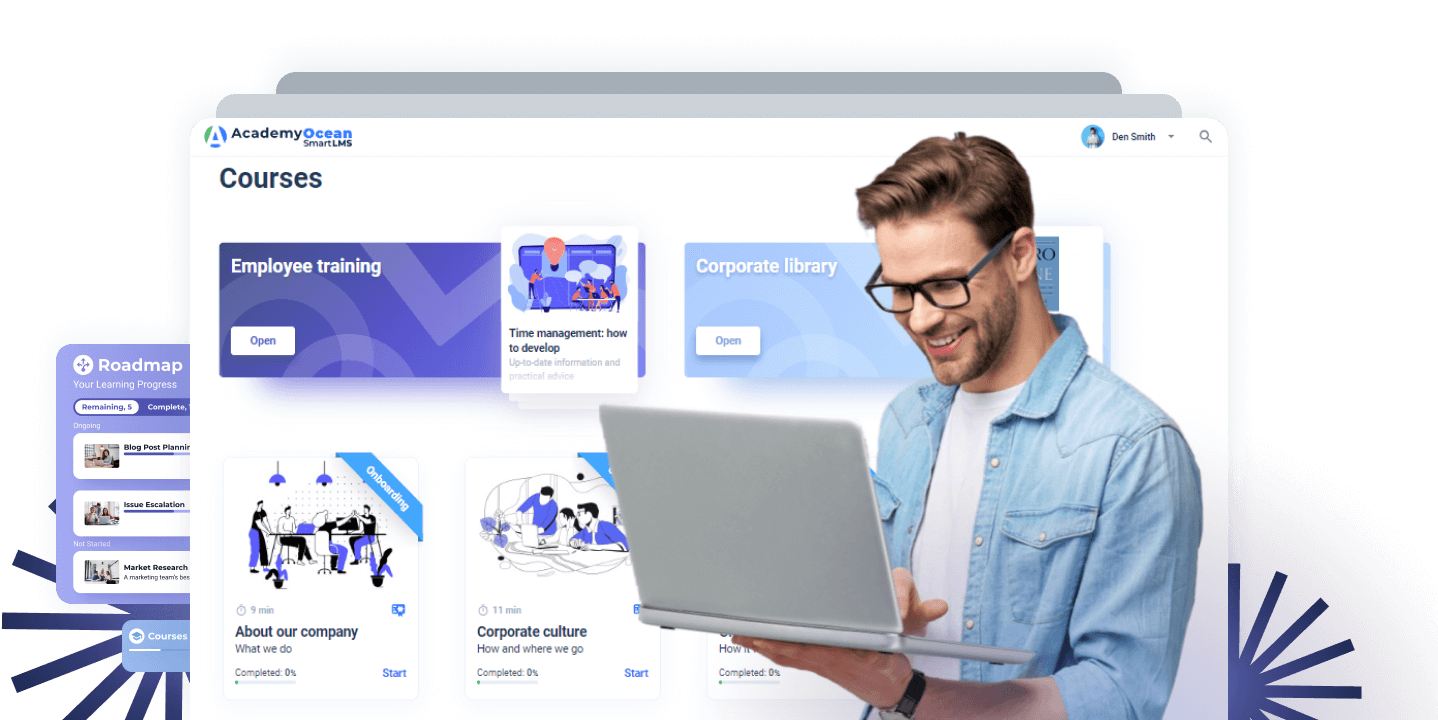
An LMS, or Learning Management System, is a digital platform that facilitates the creation, delivery, and management of educational content.
It enables organizations to plan, implement, and assess specific learning processes, making training more accessible, cost-effective, and efficient for businesses and educational institutions.
The acronym stands for learning management system.The meaning of learning management system is a digital platform that makes learning easily accessible, cheaper, and more efficient. LMS in business allows for seamless course access while offering flexible and convenient content management and developing tools for managers. To further explain what an LMS platform is, let's break it down into its parts.

It indicates the main priority of these solutions, which aim to improve traditional approaches by making training more efficient, beneficial, and cheap.
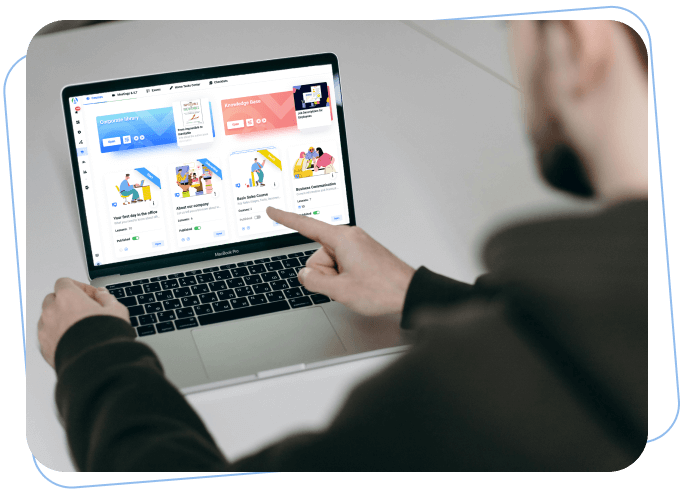
This is what distinguishes such platforms from simple file hosting and sharing services, as LMS is not just about developing and storing training materials. It is about properly distributing those materials and controlling the progress, overall process, and results.

The system is about having a centralized system controlling the statistical data, managing grades, gathering reports, and creating and using training materials.
As a part of discussing how LMS works, I want to briefly introduce you to the main types of these platforms.
These are self-hosted pre-made applications, most often bought from third-party vendors as licensed products. Companies are responsible for installing and maintaining such platforms, as they host them on their own corporate servers. In some cases, such LMS platforms are even locally developed.
Such complications arise because this approach offers the most security, as you don't involve any third-party vendors. However, you may want to contact the vendor from time to time to renew the license. Plus, getting updates and new versions is, at best, problematic with this approach. Additionally, the corporation hosting such an LMS is completely responsible for security.
The trend towards LMS adoption is growing, with 39% of US organizations aiming to start using an LMS this year (Teachfloor).
This type of solution is provided to you by a third party, typically on a subscription basis. Vendors design the features to meet a variety of training requirements. Plus, you won't need to handle server maintenance, upgrades, and installation. In addition, your service may provide several upgrade choices and free or paid backups.
Cloud-based solutions typically include a wide range of tiers, allowing you to pick the needed features. As a result, you get a unique cost that best suits your requirements. Because most cloud LMS platforms are expandable, you may choose a price that matches your needs. However, you may want to seek a self-hosted solution if you want complete freedom and the capacity to modify the eLearning platform.
| LMS Type | Description | Pros | Cons |
|---|---|---|---|
| Corporate Solutions | Self-hosted, often licensed from third-party vendors or locally developed. |
|
|
| Cloud-based LMS | Provided by third parties on a subscription basis, with various features and upgrade options. |
|
|
As it goes from the learning management system definition, you get a valuable tool that can meet even diverse training needs. But let's be more precise here. You can also learn a dedicated article here.

Judging from this use of LMS example you can greatly decrease costs, by redirecting the efforts of your workers. Hence, your team will have more free time for their daily lives and work.
Traditional learning can't stand the competition with modern approaches. It takes more time to provide the same results while requiring more money. But this is not the end; this approach helps to save money by eliminating the cons of traditional training. Your learners won't have to miss work for training and can do it conveniently whenever they want to do it. Plus, your business will save money on printing materials, hiring experts, and covering accommodation and living expenses.
You can recycle and repurpose pre-existing training materials like texts, presentations, video recordings, audio and presentations, which eliminates the need to start from scratch and saves a tonne of time and money.
LMS systems cater to diverse training requirements and preferences, providing a multitude of training techniques, such as blended Learning, instructor-led training, self-paced Learning, and microlearning.
LMS solutions save administrative processes and guarantee effective training delivery by offering centralized administration and learner progress tracking, as well as issuing certificates and compliance.
Regardless of location or department, an LMS acts as a central repository for all training records, learner data, and resources, guaranteeing uniformity and accessibility.
How can you tell whether the people you are training are paying attention to it? Observe how they advance through your classes. You may view a status update on each learner enrolled in a certain course or course using an LMS with this sort of report. The learner's personal details, when they started the course, whether it was finished, whether they passed or failed, and their score should all be visible to you.

As I have said before, certificates are a great way to guarantee that the data and skills your people are leaving with are appropriate. They also work great to control progress, as people simply won't get any certificates if they don't finish the course or score lower grades than required.
If we skip the witty LMS meaning, you can imagine it as a huge hub that allows you to develop, save, store and deliver to the TA. The key aspect here is that your workers will be able to use them on all sorts of modern devices. The only requirement is to have internet access and support modern browsers. This way, you can develop courses based on videos and ebooks from scratch or update the existing knowledge base.
You have every possible tool to work on your courses. Authoring with an LMS is as easy as it can get both for you to be creative and for your workers to learn. Additionally, you can use videos, texts, quizzes and numerous interactive elements.
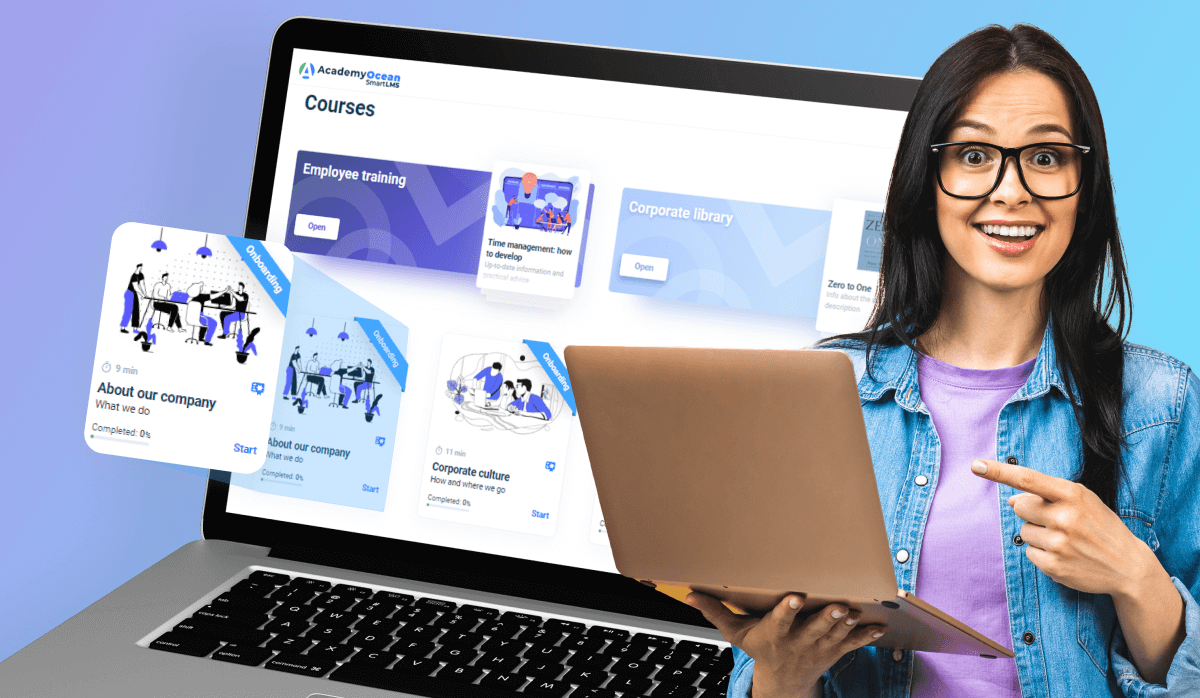
For the convenience of managing, you can arrange your materials into catalogs and prominent academies, deliver learning paths and even use dynamic content to make sure your learners get the most from your content. This makes the whole process more convenient for you and your learners alike.
You may easily share the course to your people. In turn, they can access the materials using any OS or devices despite of their places. Thus, you are guaranteeing standardized and easily accessible instruction.
You may grant responsibilities and permissions, establish and manage user accounts, and divide learners into the proper groups with management services.
LMS conveniently tracks learner activities, scores and completion rates. Thus, it provides insights that help you keep an eye on progress and assess knowledge retention.
So, here we are talking about modern, advanced and rich functionality. But let's discuss what you actually need an LMS for.
Internal staff members and external stakeholders can both benefit from training through the use of an LMS. Hence, you can transfer knowledge much faster in your company, resulting in quicker skill development and adherence to the latest regulations. In turn, an external one helps ensure that partners, clients, and other stakeholders know about the company's goods, services, and pertinent procedures.
The main meaning of such systems lies in the fact that they allow one to quickly acquire the necessary knowledge and skills thanks to the learning management system features and capabilities. Plus, it supports ongoing channel partner training for existing workers, fostering continuous processes and growth within the organization.
Maintaining solid alliances and customer interactions requires training that goes beyond organizational boundaries. By facilitating the smooth dissemination of training materials to external stakeholders. An LMS makes sure they are knowledgeable about current developments and industry best practices.
LMS helps a great deal with arranging efficient onboarding for newcomers to help them succeed. This is possible by using a single solution to deliver onboarding materials, assessments, and other resources. An LMS expedites the process and guarantees a thorough and uniform experience for every new hire.
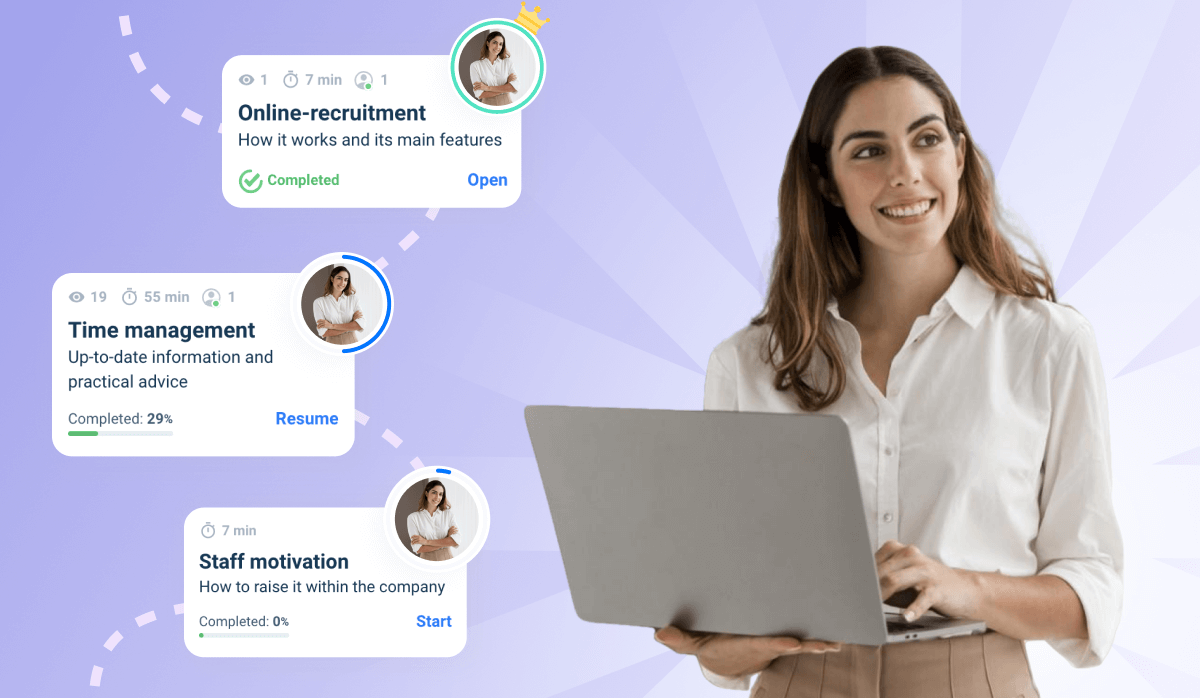
An LMS expedites the process by offering a single solution for the delivery of onboarding materials, assessments, and other resources. It guarantees a thorough and uniform experience for every new hire.
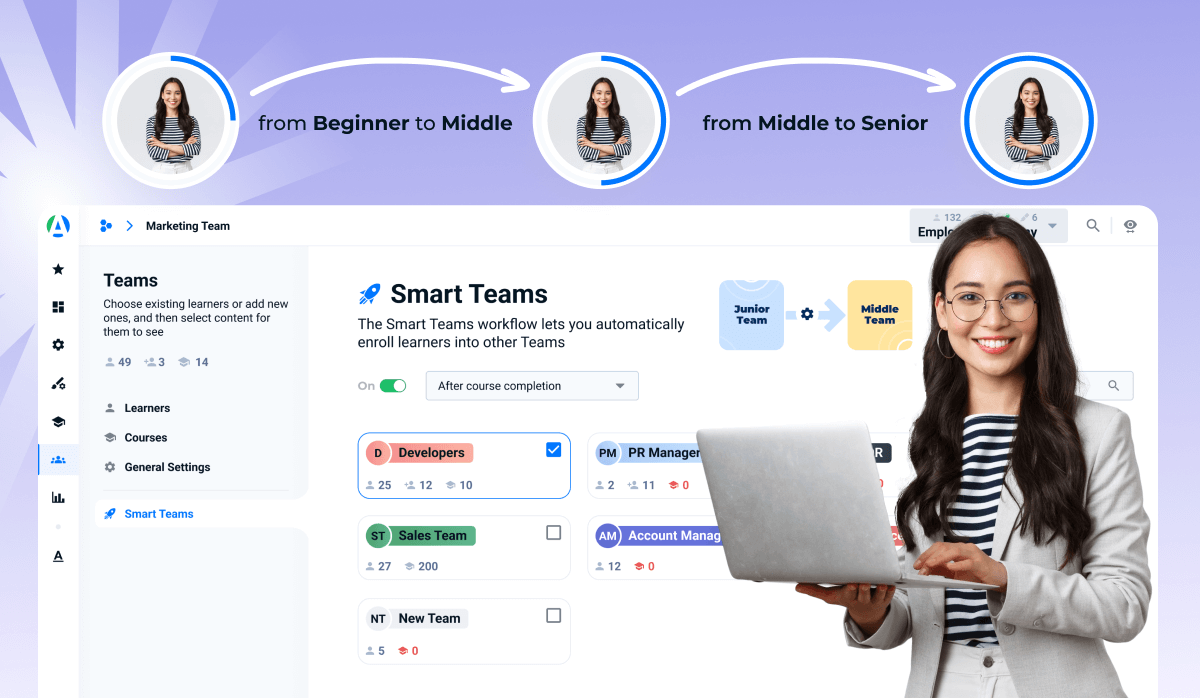
LMS serves as a great tool for providing every party with access to relevant materials. Hence, you can foster strong relationships and ensure the successful adoption of products and services by efficiently delivering content. As a result, you will keep the stakeholders informed and equipped to maximize value.
Adhering to regulations is essential in many businesses. An LMS streamlines the administration and delivery of training by ensuring that workers, pertinent stakeholders, etc., obtain current knowledge and instruction on legal requirements and industry norms.

It equips stakeholders with the proper knowledge to maximize product value. An LMS facilitates developing and disseminating tailored training content, empowering workers, partners, and clients to master product features, capabilities, and recommended practices.
LMS platforms are popular with organizations of all sizes and scopes, from small companies and fresh-born startups to massive international corporations with thousands of workers. For example, you can read more about SaaS onboarding here.


— crucial to get a seamless navigation and simplicity of use for everyone involved regardless of their position, it must have a well-designed and user-friendly interface.
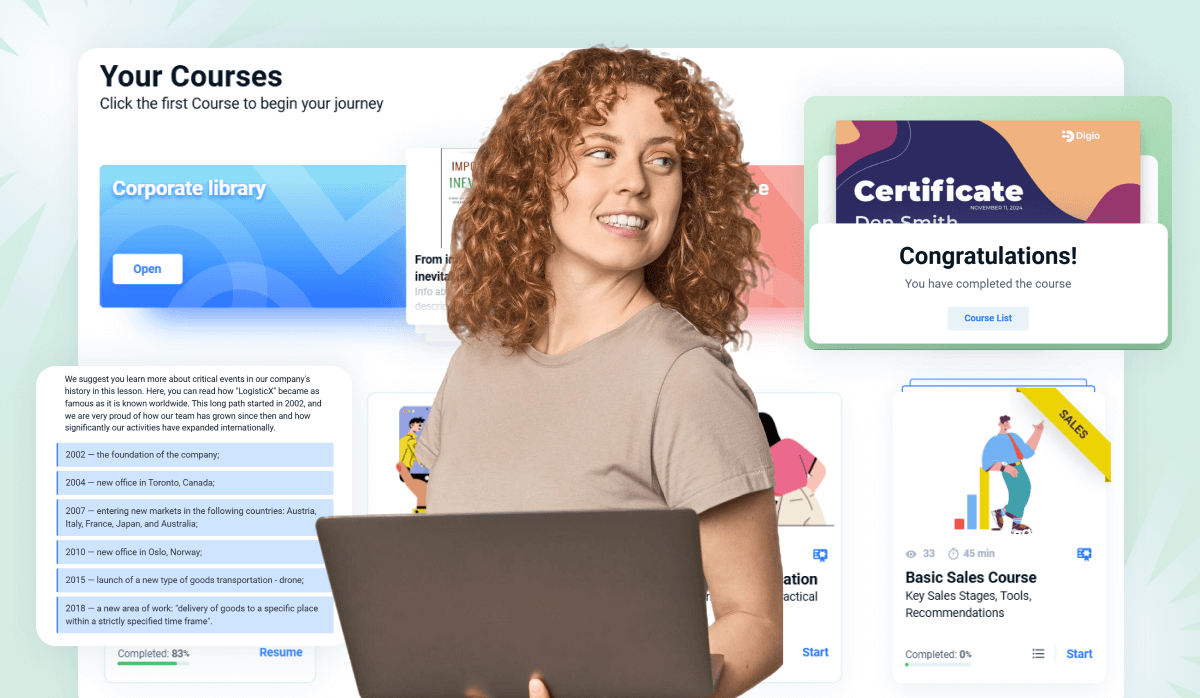
— Automating tasks like course registration, alerts, reminders, and certificate creation is made easier by LMS systems, which boost productivity and save time.
— AI-powered features like adaptive learning pathways, personalized suggestions, quality grading and feedback systems are all included in advanced LMS packages.
— By facilitating thorough tracking and administration of course development, certification procedures, and retraining needs, LMS platforms guarantee compliance and current knowledge.
— Global training and development activities are facilitated by the ability to translate the materials and user interfaces into numerous languages thanks to localization capabilities.
— so your people can use any modern device to access the LMS. Plus, they can study when offline is one of the most sought-after LMS training capabilities.
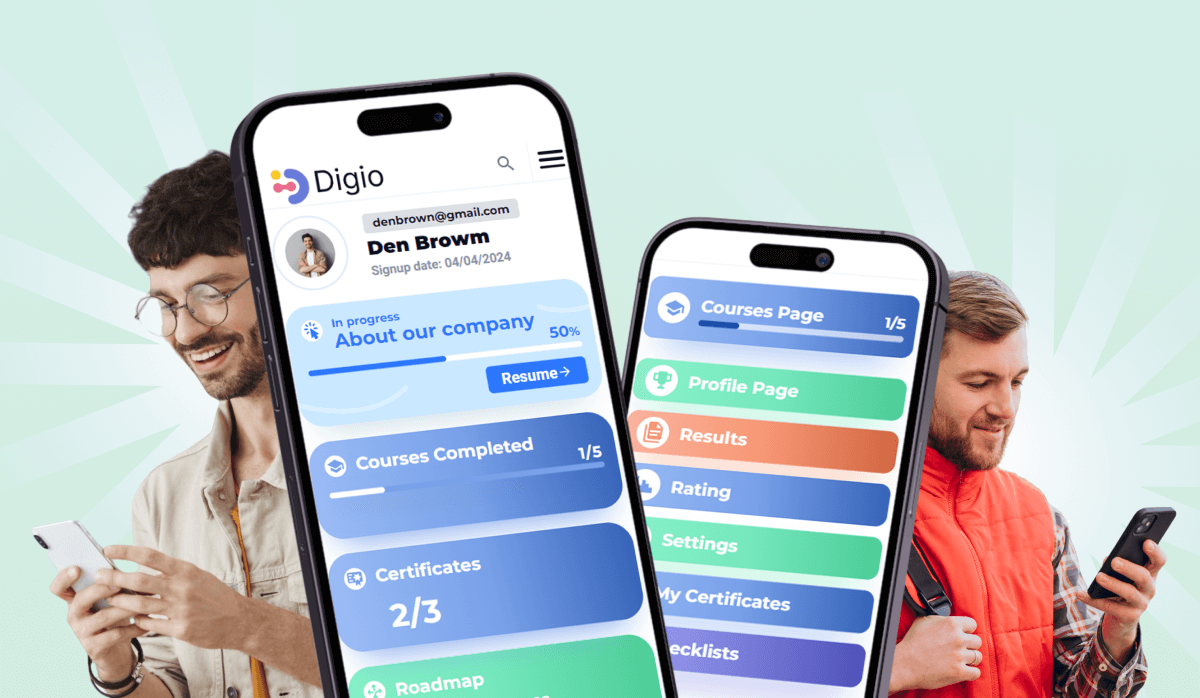
— here, we are talking about so-called cooperation with third-party systems and data exchange through eLearning standards such as SCORM and xAPI
— in recent years, this aspect has gained a lot of traction. As a result, it has become surrounded by rumours and myths. But the reality is simple. It is all about points, rewards, badges, leaderboards, etc. Does it help with retention and engagement? Yes, it helps with those and can even motivate people to learn. However, the degree of this effect strongly varies.
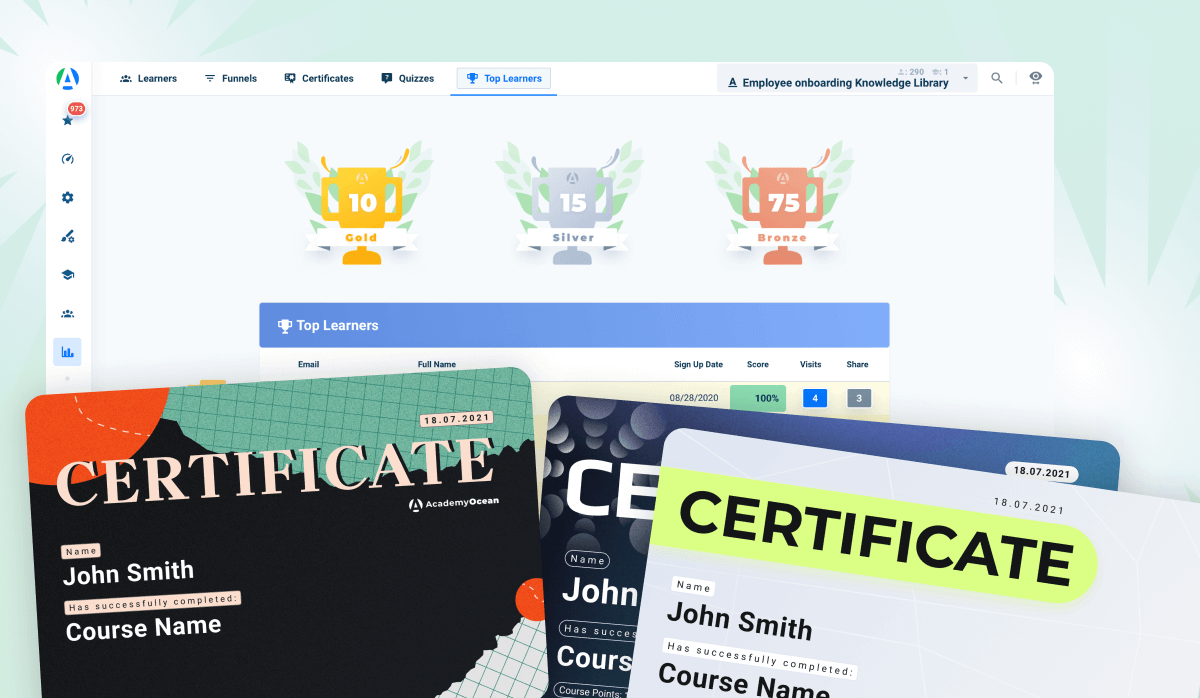
— Robust reporting functionalities facilitate quality decision-making by offering insightful information on student performance, course efficacy, and training program ROI.
LMS systems are designed with the support of multiple learning methodologies in mind. Nowhere on Earth does it mean that you must use them all at the same time, as it is all about giving you flexibility and options.

Start by creating your first course. Each course consists of lessons. You can add as many lessons as you wish, but we recommend you aim for 6 to 12 lessons per course.
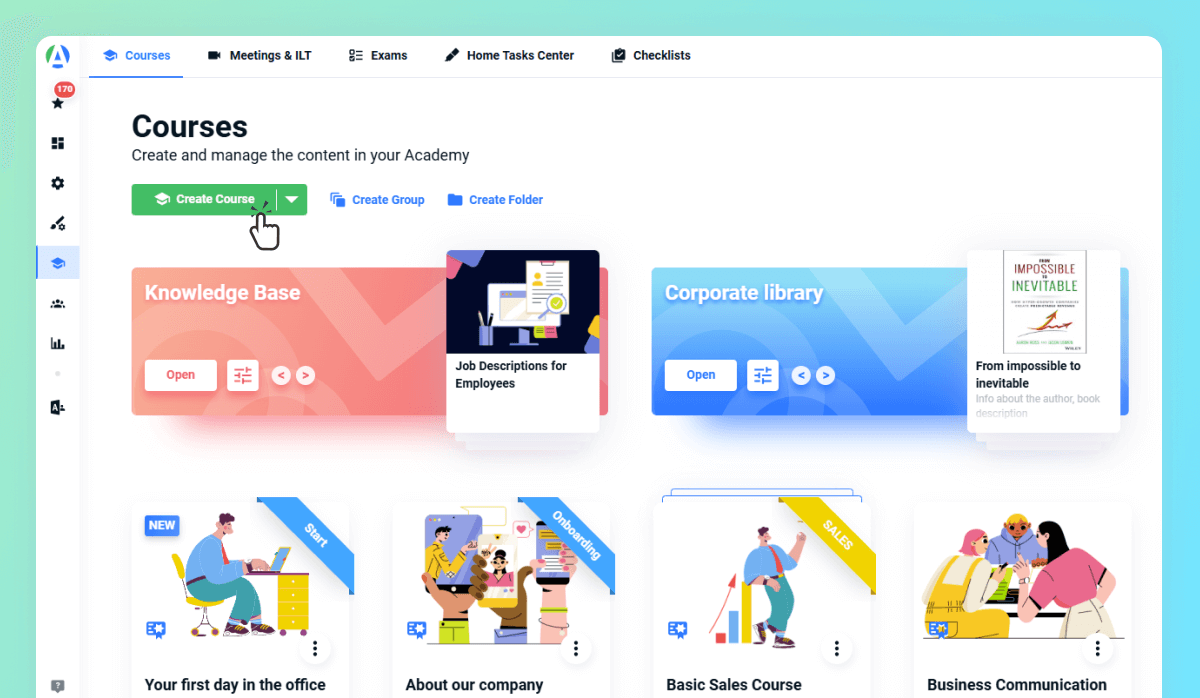
Click on the academic cap icon to open the "Courses" page. Then click on the green "Create Course" button. In the pop-up, add a course name and description.
Your course has different settings, and you can change them. There are two ways to get into the "Course Settings":
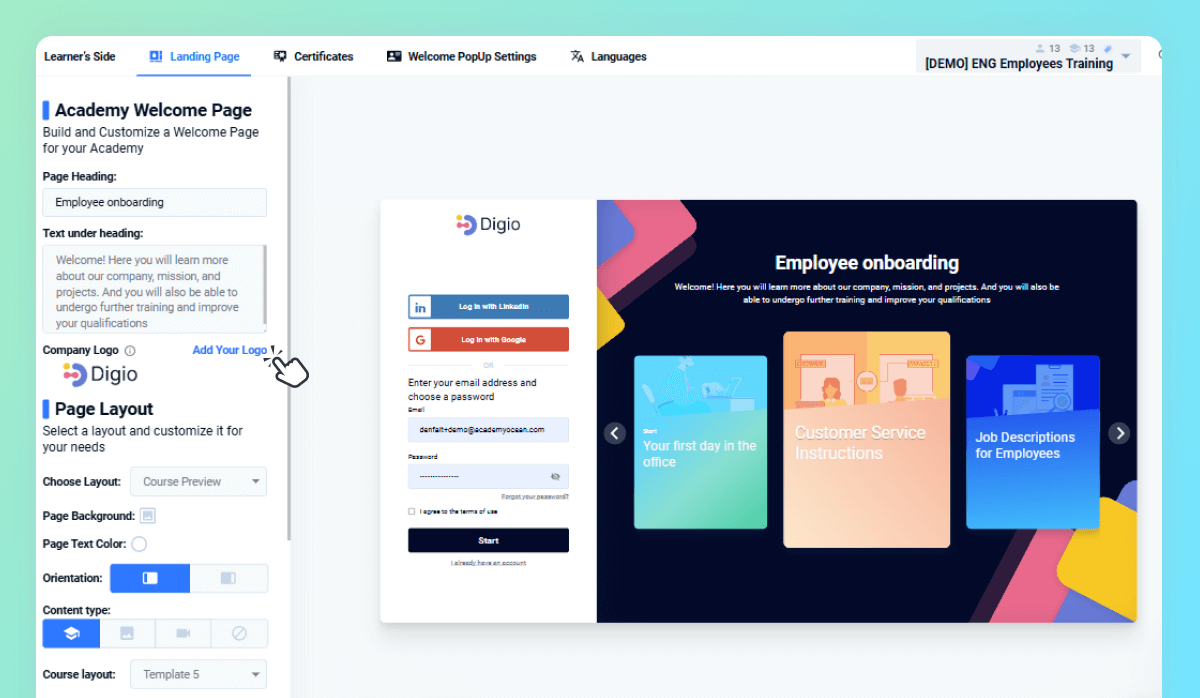
One more feature that helps the manager control the "inviting" and "uniting" flow functions inside the Academy is the "Manage Learners" tool: You can see an icon on the left-side toolbar. So just click on it and settle your Academy by Learners, making it alive.
On the first page, "Manage Learners," you can invite new Learners to your Academy.

In addition, each learner can be assigned a specific role depending on what functions should be available to him on the platform:
Learner – a person who can only take courses and be trained in the Academy.
Learner-Analyst – a learner who has access to Academy statistics. He can view statistics for all Academy learners in his learner cabinet, while other editing functions are not available to them.
Learner-Admin – a user with access to the features such as statistics, course creation, learners management, teams and main settings sections. The role was specifically designed as part of White Label solutions.
After you create and customize your lesson, you are ready to publish it. However, before doing so, you should check the default Landing page settings. This is the page where your learners log in to your Academy. Click on a palette icon to open the "Visual Settings" section.
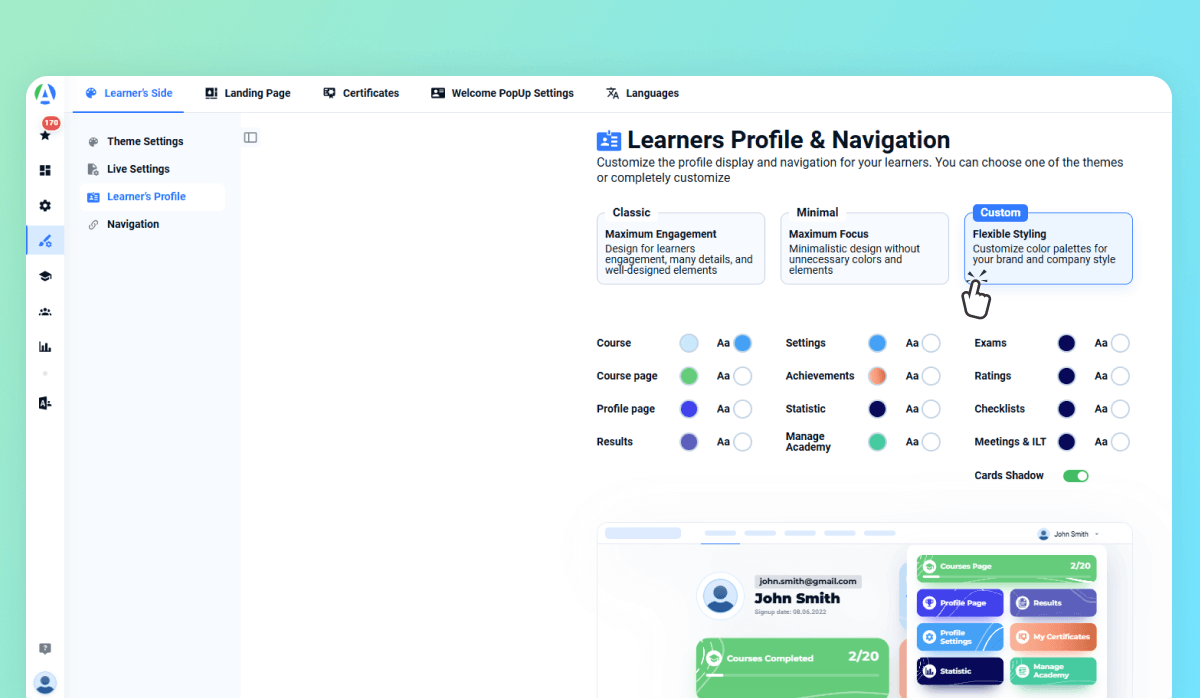
On the first tab, "Themes", set up the Academy theme by selecting one of three. The "Classic" theme is the most informative one. It is best suited for detailed customization. The "Minimalist" theme, to our mind, is the most stylish and flexible among all. The "Focused" theme is suitable for small academies.
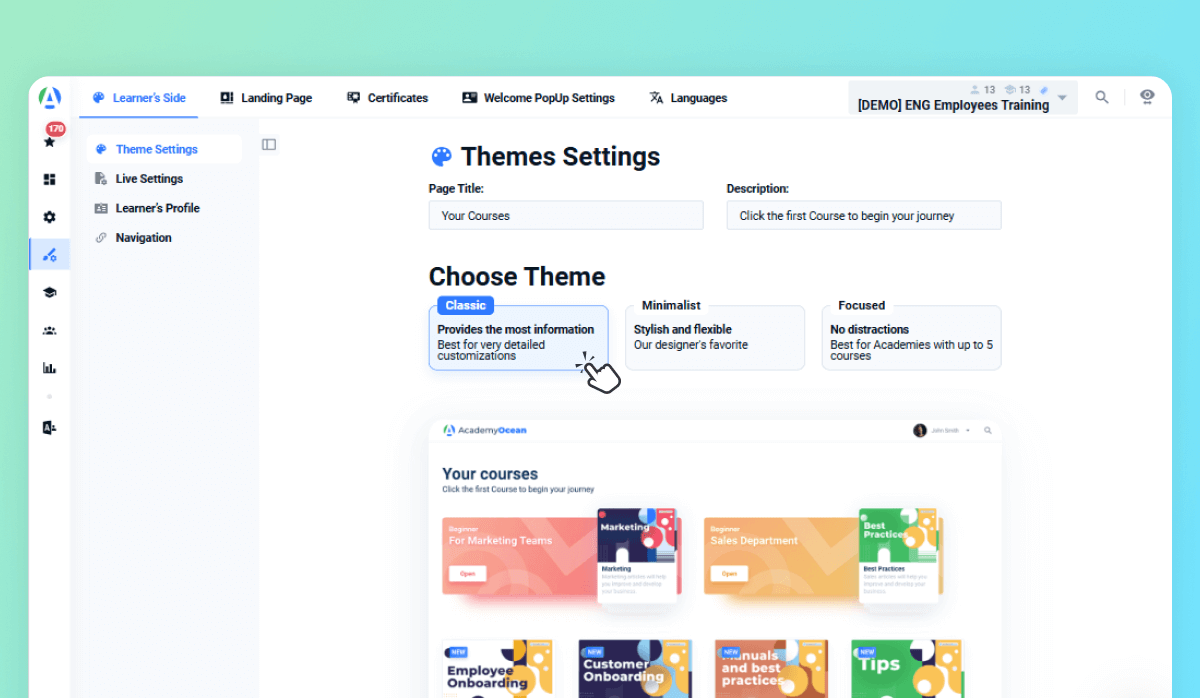
Finally, we came to the last step. Now you can publish your course and make it accessible. Click on the square academic cap icon to get to the Course section. Then, toggle the Published switch on.
Convenient funnels and other sophisticated metrics and statistics may be used to evaluate the data that you have gathered via your data gathering or trial process. These analytical tools offer insightful information on the efficacy, performance, and overall influence of your work. You may precisely evaluate the outcomes, spot trends, find possible areas for improvement, and make data-driven decisions to enhance your strategy going ahead by utilizing sophisticated statistical methodologies and metrics.